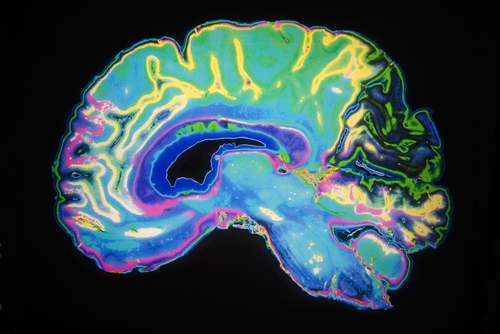A recent medical-imaging study conducted by researchers from the University of Pennsylvania and the University of Michigan could transform the health marketing industry.
Emily Falk, an associate professor of communication at the University of Pennsylvania's Annenberg School for Communication, spearheaded the study, which, according to an Annenberg press release, is slated for publication in the scientific journal Social Cognitive and Affective Neuroscience.
According to Medical XPress, Falk and her team used functional medical resonance imaging to study the brain activity of 50 smokers as they were shown graphic anti-smoking images. The researchers focused on the medial prefrontal cortex, predicting that the anti-smoking images that caused the most activity in this region of the brain would most likely prompt behavioral changes. After collecting data from the 50 participants, the researchers used the most impactful images in a large-scale, anti-smoking email campaign.
Research-Based Precedents Exist
Such studies are not unusual. According to the National Institute of Mental Health, Dr. John Gabrieli led a similar study at the Massachusetts Institute of Technology in Cambridge, Massachusetts. In this study, Dr. Gabrieli and his team monitored the brain activity of 39 patients suffering from social anxiety disorder to determine which of them would benefit most from cognitive behavioral therapy.
"Half of social anxiety disorder patients have satisfactory response to treatment. There is little evidence about which patient would benefit from a particular form of treatment," Gabrieli told the NIMH. "Currently, there is no rational basis for prescribing one treatment over the other. Which treatment a patient gets depends on whom they see."
Each of the study's 39 participants was shown a series of neutral and angry pictures of faces and scenes. Results of the study and consequent cognitive therapy showed that patients who reacted most strongly to the images benefited more from the therapy.
Smokers Light Up
Falk's study showed similar results. Once the images had been tested on the 50 smokers in Michigan, the research team distributed them, via email, to 800,000 smokers in New York State as part of a public anti-smoking campaign. The images that evoked the strongest responses in the test group were also the most effective in getting email recipients to click a link leading to anti-smoking resources.
The surprising part of this study is that it upends prior beliefs that negative anti-smoking imagery leads to defensiveness and inaction in smokers.
"By their nature, messages about the risks we take with our health whether it be by smoking, eating poorly, or not exercising cause people to become defensive," Falk told Medical Press. "If you can get around that defensiveness by helping people see why advice might be relevant or valuable to them, your messaging will have a more powerful effect."
Though this study is one of the first to describe with such specificity the neurological process behind consumer decisions and behaviors, marketers have been trying to use neurological science to test and validate advertising campaigns for years.
Marketing For The Senses
In 2007, Bloomberg Business alerted consumers to the emerging trend of 'neuro-marketing,' where researchers use fMRIs and other imaging technology to test the brain's response to different advertising campaigns. In 2012, Falk conducted one of these studies with Matthew Lieberman, professor of psychology, psychiatry, and bio-behavioral sciences at University of California, Los Angeles, reported UCLA Newsroom. Researchers tested the brain responses of 30 smokers to three different ad campaigns, and found that the participants' brain activity predicted their responses.
"We didn't expect how radically different people's predictions would be from the predictions we made based on their brain activity," Lieberman told the publication. "We had people telling us one thing and this brain region telling us something diametrically opposed."
Evidence from these studies seems to show that the most effective marketing campaigns must utilize not only the more traditional focus group approach, but invest in neuro-marketing technology for more accurate results.
As Lieberman told the UCLA Newsroom, "We believe our own reasons with an intensity that is out of proportion to their accuracy. In this study, we are bypassing people's self-reports and getting at a form of hidden wisdom in the brain. This is the region we identified. We have tested it multiple times, and each time, it has been successful."
Ronny Bachrach
Latest posts by Ronny Bachrach (see all)
- Konica Minolta Debuts First-of-Its-Kind Digital U-Arm System at AHRA - July 27, 2016
- Researchers Detect Signs Of Stroke Risk Using MRI - June 27, 2016
- Imaging Biz: Q&A with David S. Channin MD: How to Make PACS Patient Centered - June 22, 2016










